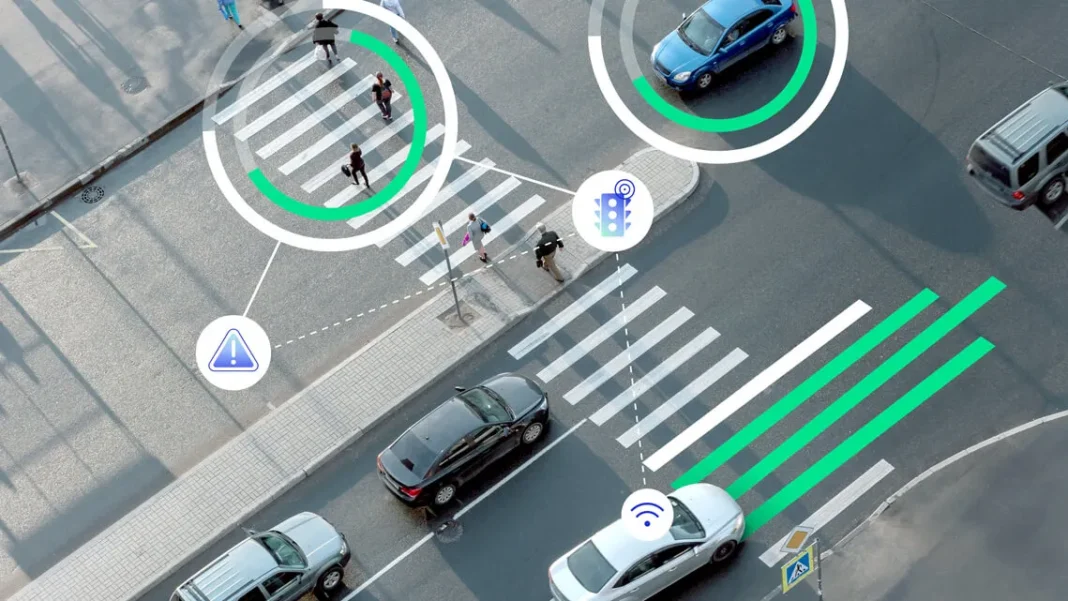In today’s fast-paced world, the challenges of road safety and traffic management are becoming harder to ignore. Congested roads, frequent accidents, and inefficient transportation systems are daily struggles that demand innovative solutions. The steady rise in vehicle numbers, combined with the relentless march of urbanization, has made rethinking transportation systems more urgent than ever. Amidst this urgency, Vehicle-to-Everything (V2X) communication emerges as a groundbreaking technology with the power to transform the automotive world.
Imagine a future where vehicles seamlessly “talk” to one another, share real-time data with traffic systems, and even interact with pedestrians through smart devices. This vision of connectivity is what V2X promises. Creating smarter, more responsive transportation systems, not only holds the key to safer roads but also aims to make traffic flow more efficiently, easing the stress of daily commutes.
At its core, V2X works as a sophisticated network enabling vehicles to communicate with their surroundings. Through Vehicle-to-Vehicle (V2V) connections, cars can share vital information, like speed and location, to avoid collisions. Similarly, Vehicle-to-Infrastructure (V2I) communication ensures smooth interactions with traffic signals and road systems, reducing congestion and delays. Even pedestrians aren’t left out—Vehicle-to-Pedestrian (V2P) communication uses smart apps to establish a safe connection between walkers and vehicles, fostering an ecosystem where roads become truly intelligent.
But how does all this work? The magic lies in the advanced technologies driving V2X. Wireless standards like DSRC (Dedicated Short-Range Communication) and C-V2X (Cellular Vehicle-to-Everything) ensure fast and reliable communication between cars, while sensors such as radar, lidar, and cameras help vehicles understand their surroundings. When these technologies are paired with the Internet of Things (IoT), the result is a seamless exchange of data between vehicles, infrastructure, and other connected devices. Together, they form the backbone of a secure and efficient automotive ecosystem that’s both smart and responsive.
The impact of V2X on road safety is remarkable. It’s like giving vehicles an extra set of “eyes” and “ears.” Through V2V communication, cars can anticipate potential collisions and warn each other in advance, reducing the likelihood of accidents. V2I communication, on the other hand, optimizes traffic flow by syncing with traffic signals to adapt in real-time. In emergencies, V2X enables priority access for ambulances and fire trucks by coordinating with traffic systems, ensuring these vehicles can navigate through busy roads quickly and safely.
Beyond road safety, V2X also revolutionizes traffic management. Think of a system where cars instantly share updates about traffic conditions, helping drivers avoid congestion and choose faster routes. Or picture dynamic rerouting suggestions based on real-time data, minimizing delays and creating a more predictable commute. By enabling smoother traffic flow and reducing jams, V2X promises to make urban mobility easier for everyone.
But V2X is more than just a technical marvel—it’s also a huge business opportunity. Companies working on V2X technologies have a chance to revolutionize vehicle connectivity, offering solutions that cater to a growing demand for smarter cars. Collaborative efforts among automakers, tech providers, and city planners could lead to smarter cities and infrastructure, unlocking endless possibilities for innovation.
Despite its promise, V2X isn’t without challenges. With vehicles becoming increasingly connected, cybersecurity becomes a critical concern. Safeguarding these systems from hacking is vital to ensure the integrity of data and user trust. Standardization is another hurdle—universal communication standards are needed to ensure compatibility across all vehicles and systems. Lastly, public awareness will play a major role. People need to trust the technology and understand its benefits for it to be widely adopted.
In many ways, V2X communication represents a leap into the future of transportation. By addressing safety concerns, improving traffic management, and creating new business prospects, it paves the way for a smarter, more connected world—one where roads are safer, traffic is smoother, and the entire transportation ecosystem evolves into something truly intelligent.




